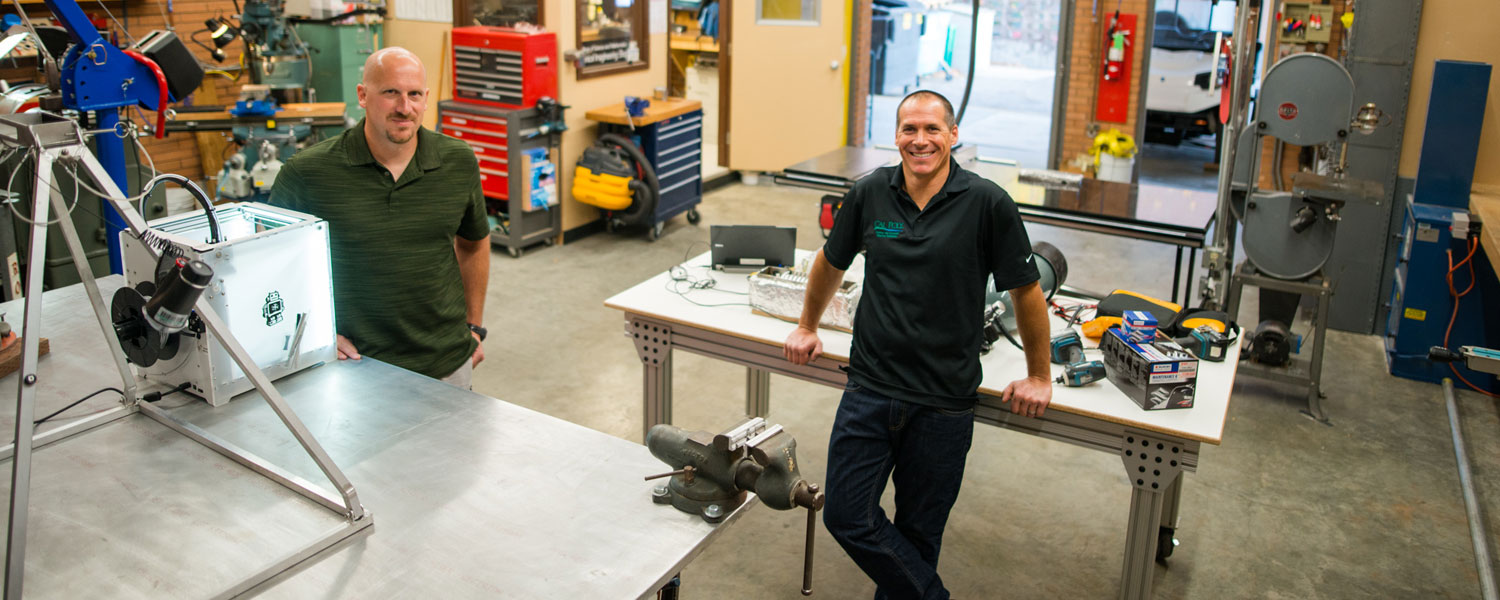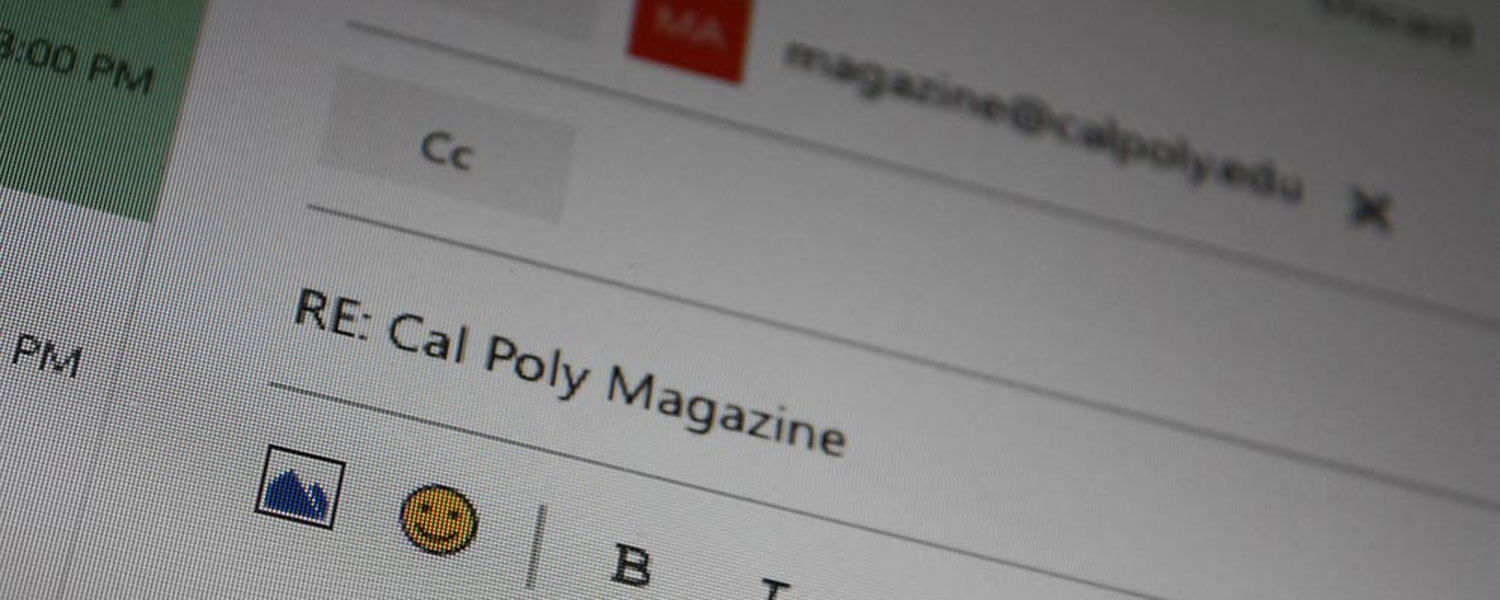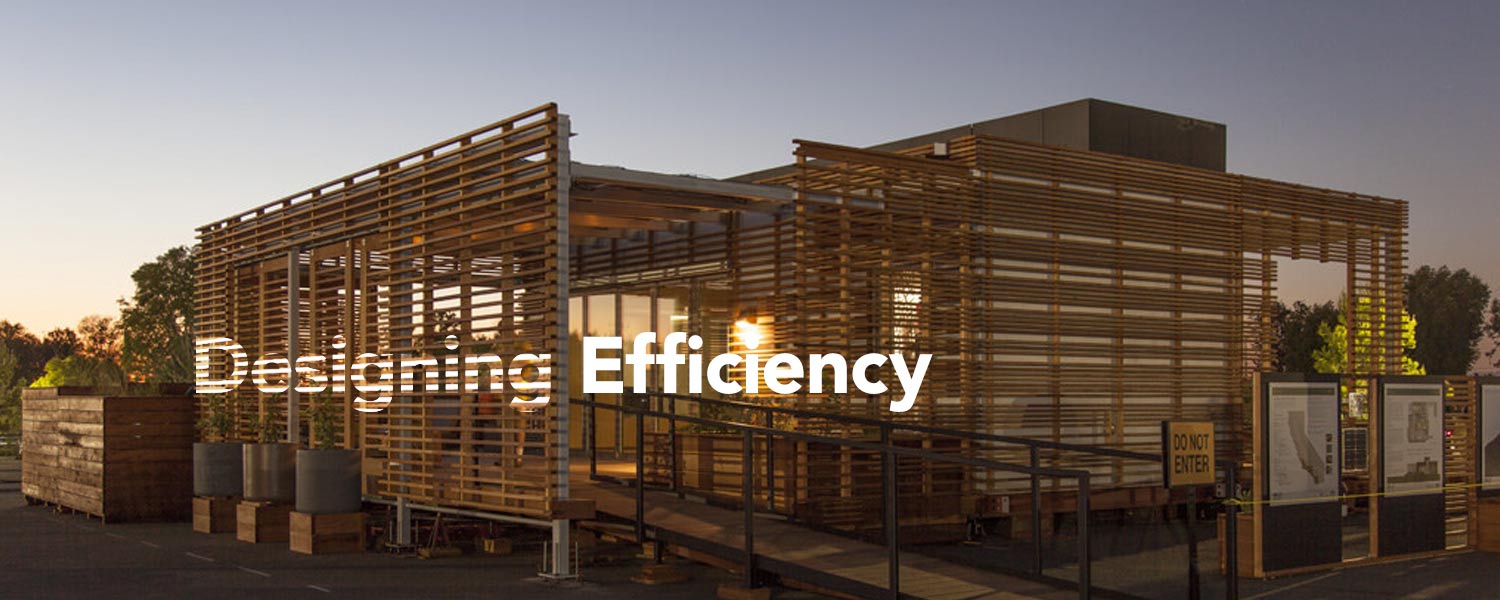Spaces
Bringing Science to Life
By Rachel Henry

The sign in the window reads “Technical Imagineering.” Inside the office, Doug Brewster, a technician in the College of Science and Mathematics, fiddles with a 3D computer model of a basket that will hold a 200-pound, 50-year-old fern. His brother, Rob, tinkers in the adjacent shop. The title “technician” hardly does the brothers justice — imagineers is closer, though they describe it more simply.
“We solve problems,” Rob says.
“We take faculty ideas for research or class projects and bring them to life,” Doug says.
Students and faculty rely on technicians like the Brewsters to help them figure out how to measure the vital statistics of lizards or the density of an otter pelt. As in many shops around campus, Learn by Doing starts here, with the creation of a crucial apparatus or instrument.
“What’s cool about Cal Poly is that the students are involved in that process,” Rob says. “They’re involved in the planning meetings, and whenever we can, we have them help build the equipment. Everybody gains from that.”
Here are just a few samples of the Brewsters’ work.
Controlled Reptile Oxygen and Climate System

To measure how well lizards withstand heat stress at different altitudes, students needed a series of portable chambers in which they could vary the temperature and oxygen concentration. “We’re heating a mixture of 40 percent oxygen, which increases flammability, so it is important to use an isolated heat exchanger,” said Rob.
Mounting System for a 23’ x 11’ Mural of the Victoria Crater on Mars
The brothers designed a mounting system that allowed all 14 panels of this giant mural to twist and rotate in three dimensions so they could be aligned perfectly.
Doug: “The wall’s not straight. It looks straight—”
Rob: “But walls aren’t perfectly flat.”
Tide Simulator

Mimicking the natural environment of intertidal species requires a machine that can produce variations in oxygen, turbulence, water temperature and light while simulating tides.
Doug: “You have electricity running the unit, but everything has to be sealed because it’s in a wet environment. On top of that, you have to be able to access the animals.”
Research Vessel TL Richards

The Brewsters transformed this 26-foot, commercial-grade boat into a true research vessel by adding a number of features, including a radar tower, a davit for lifting instrumentation into and out of the water, a harness for lowering the boat into the water when there’s no launch ramp, and a live well to keep marine organisms alive as they’re transported back to the Cal Poly Pier.
Rob: “The boat weighs 8,000 pounds—”
Doug: “So you have to oversize your components for shock loading. If one sling broke—”
Rob: “We definitely don’t want it falling. That would be a big, big problem.”
Tuang Child Skull

Evolutionary biology students got a hands-on learning experience when the brothers printed a 3D scan of a child’s skull found in Africa in 1924. The skull provided the first evidence of a new hominid species.
Doug: “We downloaded the file and hit print. The 3D printer is a game changer.”





